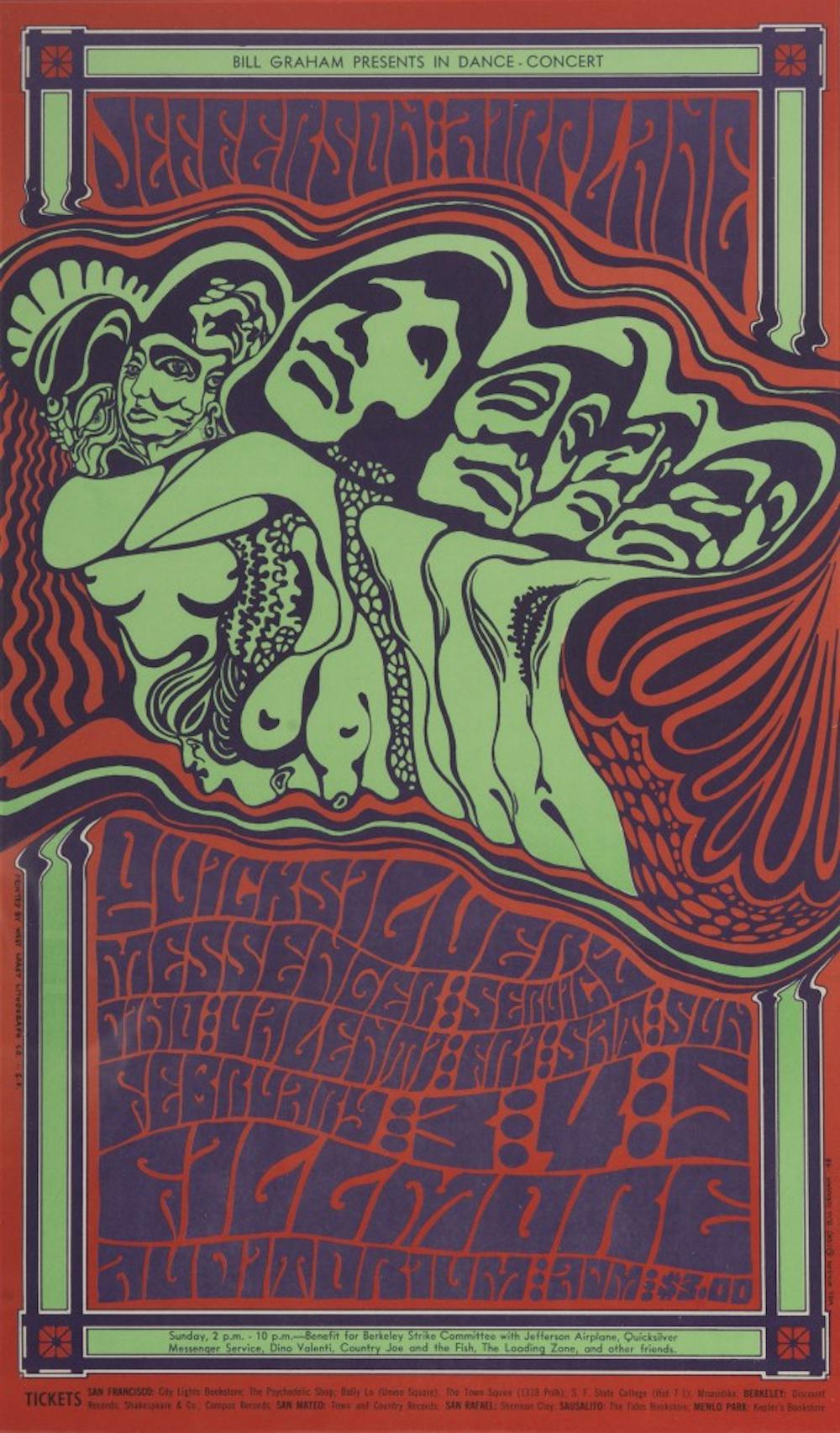Mel Byars is a design historian, an author, a professor and a collector. He has donated many items to museums across the globe, including the Cooper Hewitt, Smithsonian Design Museum and the Prague Museum of Decorative Arts.
The exhibit currently on display on the second floor of the Columbia art museum featured in the works on paper gallery is “Psychedelic Design: Rock Posters from the Mel Byars Collection.” It explores the cultural revolution and social upheaval of San Francisco in the 1960s.
Byars spent his childhood in Columbia, South Carolina. After graduating from Camden High School, he studied journalism at the University of South Carolina in the 1950s. He chuckled when I asked what type of journalism he studied.
“It wasn’t that way back then,” he said. “There was certainly no broadcast journalism. TV was really new.”
Byars moved to New York City after completing his degree at the University of South Carolina.
“I graduated on a Friday, and I left on Saturday with $100,” he said.
Byars started working in New York as an art director for book publishers including Prentice-Hall and McGraw-Hill. He has also taught at the Pratt Institute, the Fashion Institute of Technology, Bezalel Academy of Arts and Design and many others.
“I collect things and then I give them away to museums because I get bored very easily,” Byars said.
Byars started collecting psychedelic rock posters from the mid ‘60s and ‘70s around six years ago. He mentioned that when he started collecting the posters, they were relatively inexpensive. Today, a poster in perfect condition could sell for as much as $10,000. He now has a collection that includes over 100 examples.
“My interest in these posters is not like most people's. I don’t care about the musicians. I only care about the artwork itself,” Byars said.
The posters originate primarily from the San Francisco Bay area. They advertised upcoming concerts at rock and roll venues such as The Fillmore or The Avalon Ballroom. They announced iconic bands from the era including Janis Joplin, Jefferson Airplane, Cream and Muddy Waters.
“This is the moment when The Grateful Dead became The Grateful Dead,” Catherine Walworth, the curator of the exhibit, said.
The posters were designed by hand. They were created using a lithographic press, a labor-intensive process where individual colors required a separate screen.The text featured on many of the posters often drips off the page, and words bleed together. Contrasting colors reminiscent of the Op Art movement often make it difficult to decipher what the posters say. The posters were also heavily influenced by the flowing calligraphy characteristic of the Art Nouveau movement that was popular in 19th-century Europe.
“For some of these artists it was meant to recreate the feeling of a psychedelic experience; for others it was just supposed to be an experience in itself,” Walworth said.
She selected the 18 posters featured in the exhibit and constructed the structural layout of the gallery.
Some posters are grouped together so that the frames touch. Others are arranged individually.
“I didn’t want the layout to be traditional at all,” she said.
The exhibit will be on display at the museum through March 12. It provides an intimate glimpse into the psychedelic movement of the 1960s. Rich with historical context, it embodies the diverse nature of American art.

